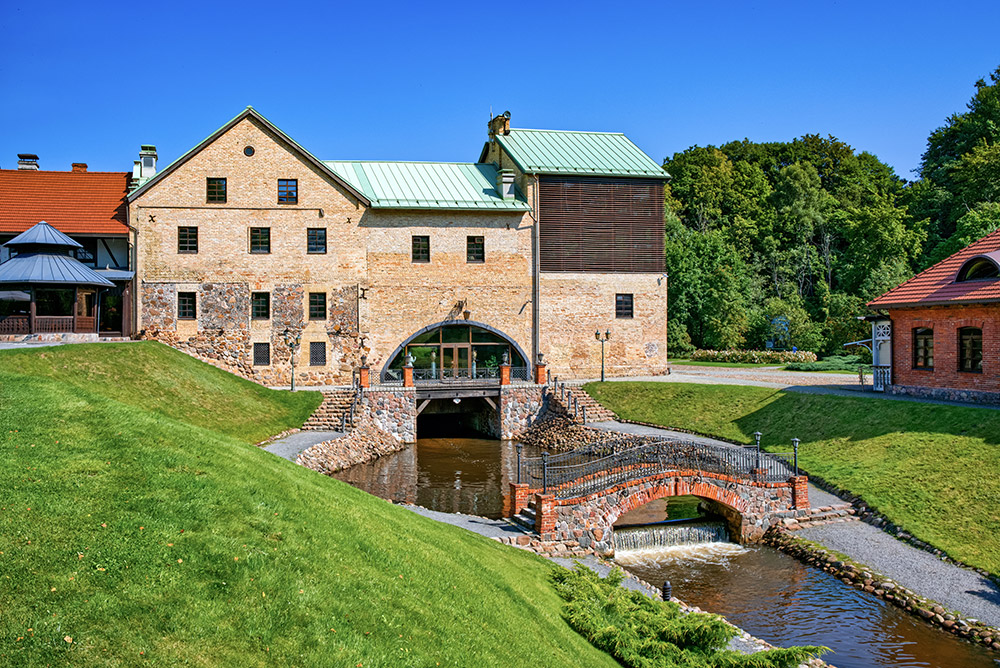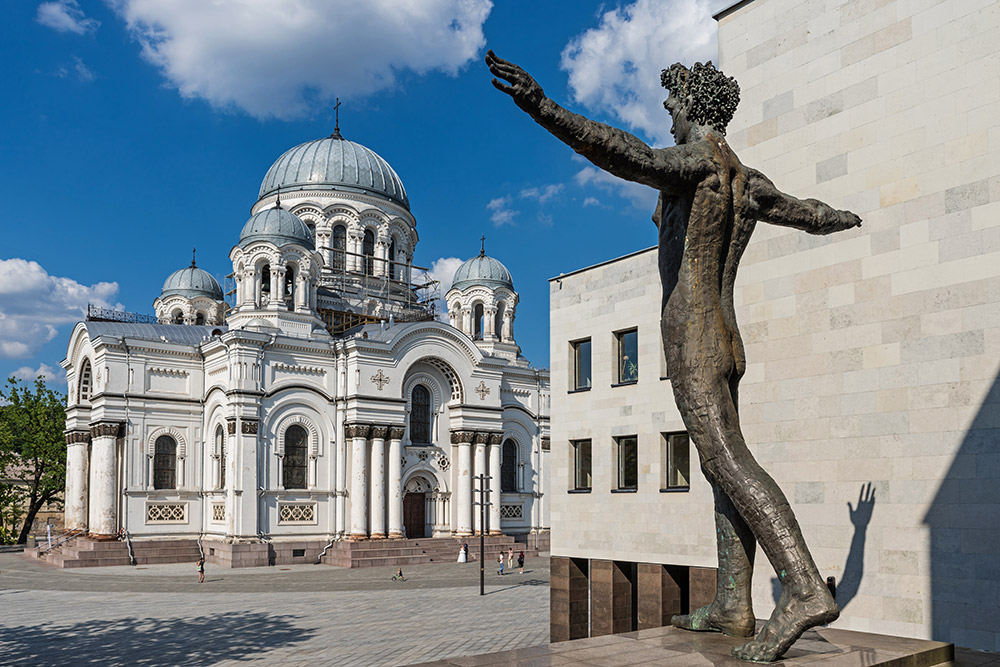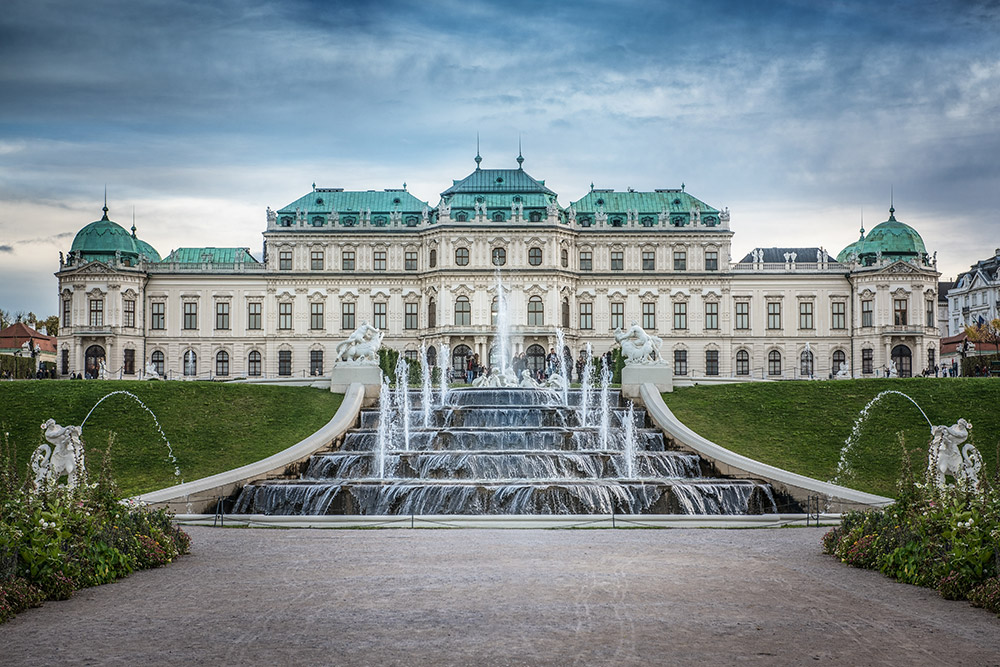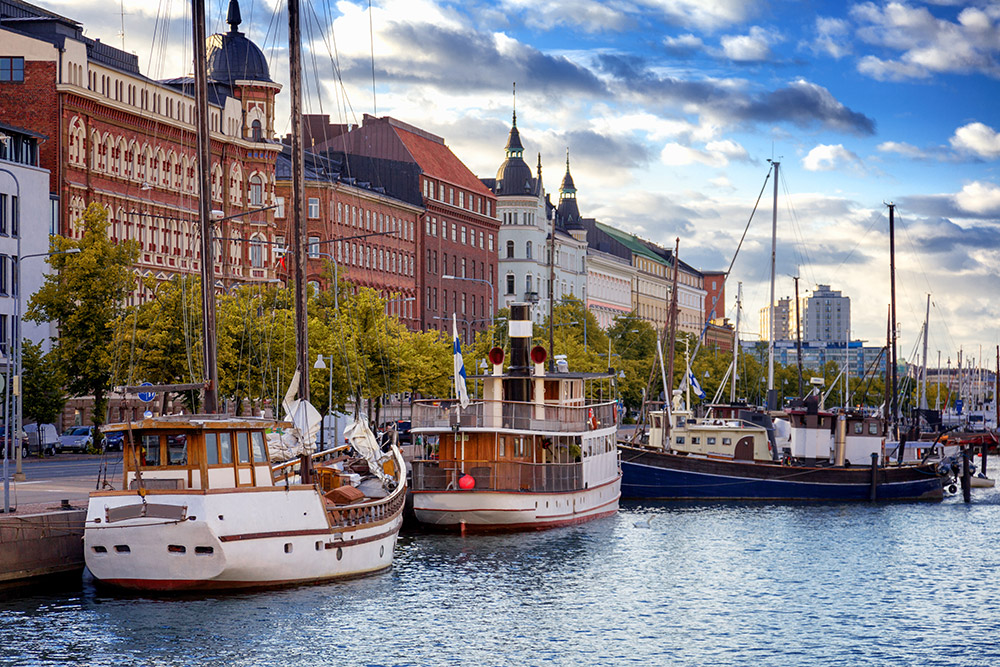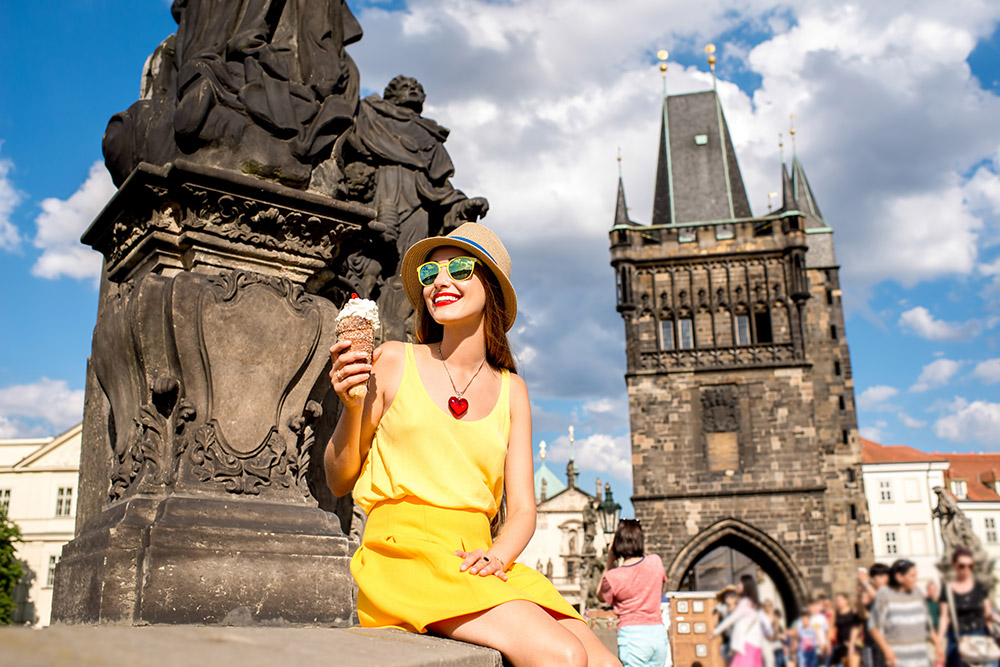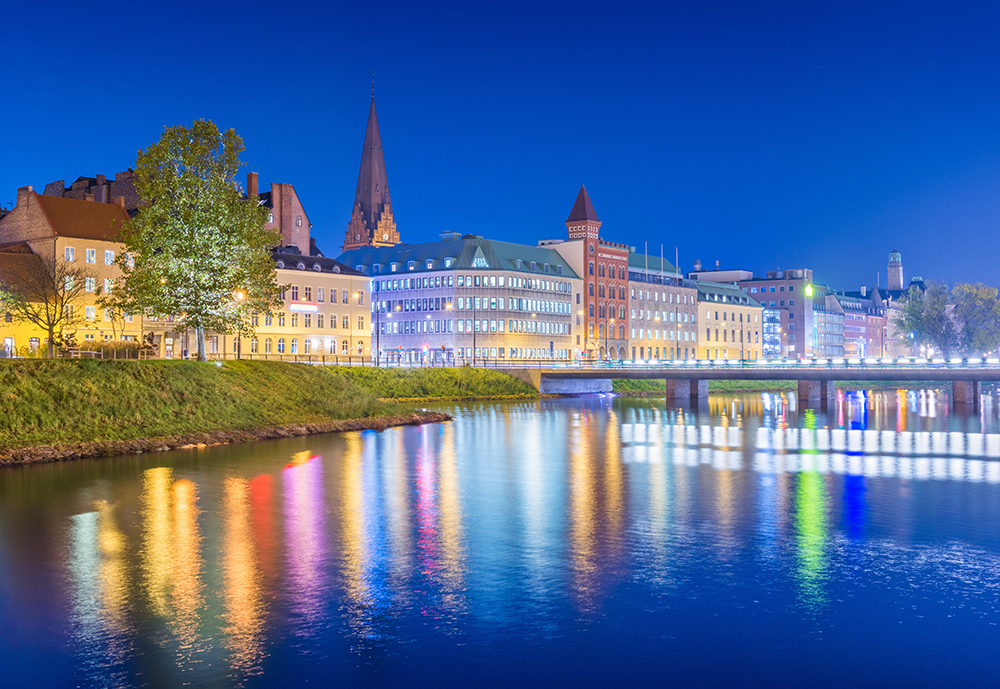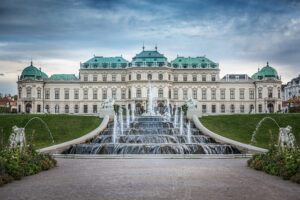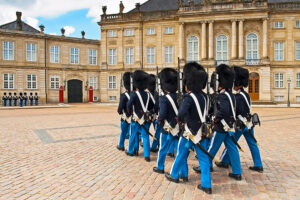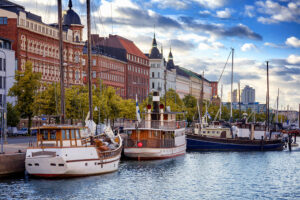Explore the two capitals of Lithuania only 100 km apart from each other, but having different history, different architecture, different images, and even different features of their inhabitants.
Popular itinerary for Art and History Tour in Lithuania:
Day 1. Arrival – Vilnius
Upon arrival to Vilnius International Airport and transfer to the hotel start your first acquaintance with the Lithuanian capital by the general sightseeing of the city. Vilnius today having about 600.000 residents was founded by Gediminas, the Grand Duke of Lithuania, in 1323. Throughout its history the city changed hands several times and this left its mark on the appearance, character, culture and heritage of this city.
We will start exploring Vilnius, from Gediminas’ Castle tower from which one can admire the beautiful panoramic view of the city. The tower is the only survived construction of the 15th century Upper Castle that once was the residence of the Grand Dukes of Lithuania.
We will go down to the foot of Gediminas’ Hill and visit the neoclassical Vilnius Cathedral Basilica, the main Catholic cathedral in Lithuania, built in that same place where once stood the Lithuanian Pagan shrine. Its present form was designed by the Lithuanian architect Laurynas Gucevicius and adorned by the sculptures of Italian Tommaso Righi. Among the internal chapels, stands out especially the chapel of St. Casimir, the pearl of Lithuanian Baroque.
Day 2. Vilnius
Today we will spend mostly in the old town of Vilnius. Walk to Daukantas square where is located the Presidential Palace that was an eyewitness to some historical events in Lithuanian capital, as for example, the stay of Emperor Napoleon in Vilnius on his march to Russia in the summer of 1812.
Next stop is Vilnius University, founded in 1579, one of the oldest universities in Eastern Europe. Its 13 courtyards form a beautiful ensemble of Gothic and Baroque architecture. Visit most impressive Smuglevicius Hall of University Library, where especially rare books and manuscripts stored. In one of the courtyards in the years 1866-1915 was functioning Vilnius Drawing School, where some famous artists started their career, among them Chaim Soutine, Jack Lipshitz, Pinchas Kremegne, Boris Schatz, Naum Aronson, Michel Kikoïne. We don’t miss a unique Petras Repšys frescoes in the Philology Faculty. Finish your visit to the University by climbing to the belltower of St. John church from which you will admire the fascinating view of the Old town of Vilnius.
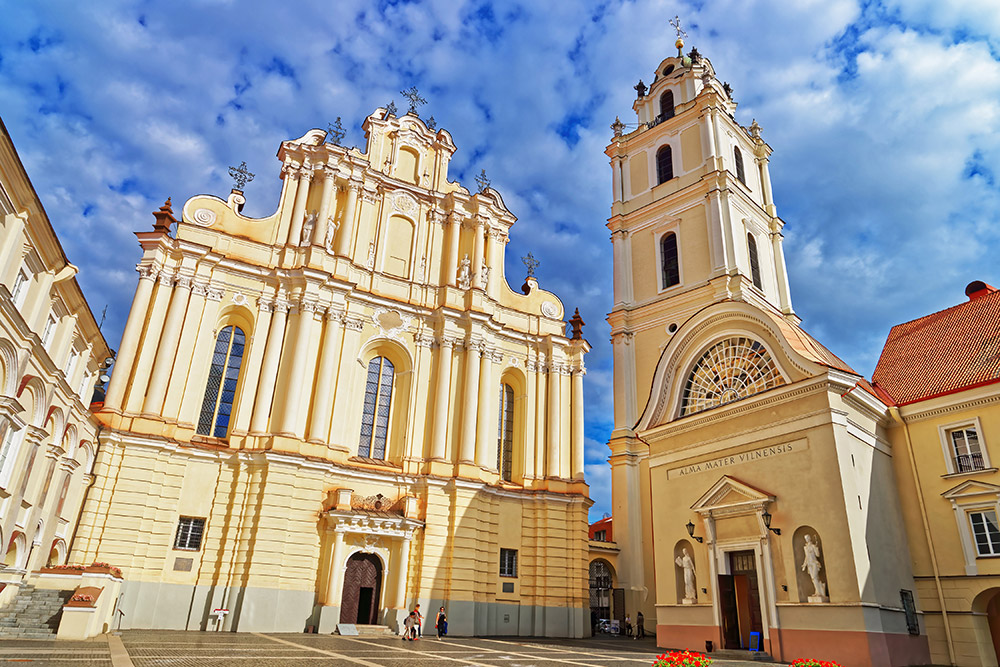
Next to the University is located the former Jewish quarter of Vilnius or Vilna, which was nicknamed Jerusalem of the North because of its huge input into the culture, religion, scholarship, education and spiritual life of the Jews in Eastern Europe. Walking along the narrow streets and lanes of the medieval quarter and explore the traces of the vibrant Jewish community that existed here before the Holocaust.
Continue walking in the old town of Vilnius up to the Gate of Dawn considered one of the holy places in the city. In the 17 c. a chapel was built above the former gate in the city wall and in it a miraculous icon of the Blessed Virgin Mary, “Our Mother of Mercy” protecting the city of Vilnius.
From here we will go down to another part of the old city to admire a masterpiece of Lithuanian Gothic architecture, the most graceful Church of St. Ann, built in 1501. Then visit to Amber Museum containing an imposing collection of distinct types of amber, called “the Baltic Gold”. Combined with excavated medieval kilns it presents an excellent outlook of the past of Lithuanian nation.
We will finish the walking tour of Vilnius in the “Republic of Uzupis,” Bohemian and artistic quarter of Vilnius. Here one can enjoy various street exhibitions, open-air performances, visit numerous art galleries, and learn about the “political structure” of the Republic and read its Constitution in one of 43 world languages.
Day 3. Vilnius
This day we will deal with the modern history of Vilnius. We will start at the Baltic Way Monument in Vilnius, that was erected in memory of the 50th anniversary of the infamous Molotov-Ribbentrop pact signed on August 23, 1939. On that same day in 1989 over two million people formed a human chain holding hands from Vilnius through Riga to Tallinn.
Next stop near Seimas, the Parliament of Lithuanian Republic. At the memorial in the courtyard of the parliament we will recall the tragic events of January 1991, when the Soviet tanks captured the TV tower, Radio and TV building, and newspapers’ offices. 14 Lithuanian citizens were killed during the peaceful protests the occupiers. Next day thousands of people came to defend the parliament of a young republic.
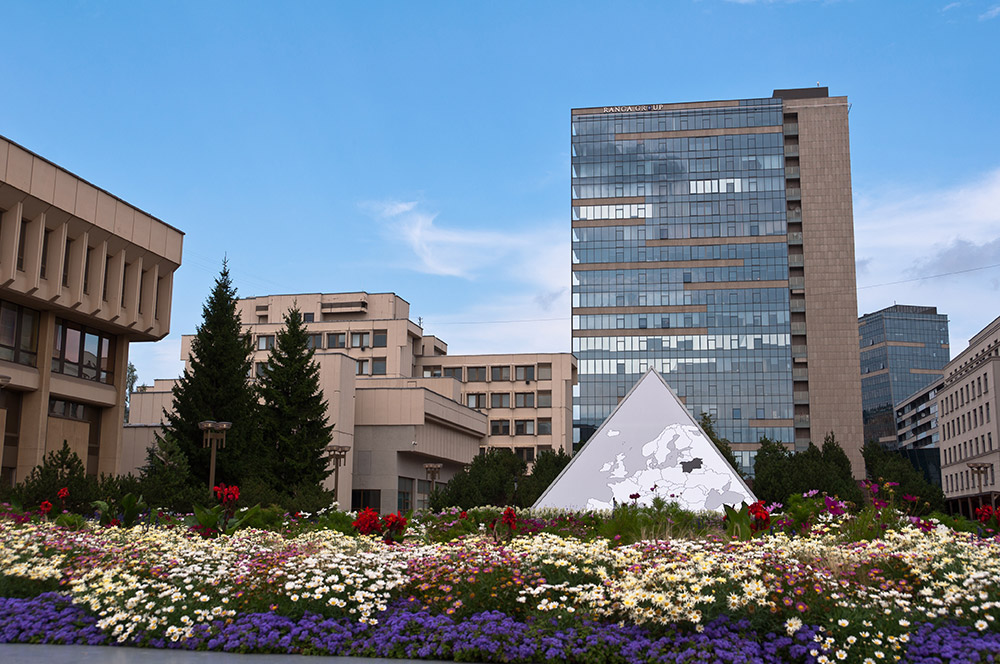
You will continue to the Museum of Occupation & Freedom Fights. It is located in that same building where Gestapo and KGB settled during the 3 years of the Nazi and 50 years of the Soviet occupation of Lithuania.
Afterwards you will have the opportunity to see the Lukishkes prison complex that was built in 1904 and was used as a place of imprisonment for political opponents of the government during Tsarist Russia, Polish Republic, German Nazi occupation and the Soviet Union rule. The prison had a complete life support system: water supply and sewerage network, central heating and ventilation system, prison kitchen, bakery, bathhouse, laundry, and even prayer houses for three confessions: Catholic, Russian-Orthodox and Judaic.
After you will grab some lunch on your own you will head to MO museum, containing over 6000 works of painting, graphic art, photography, and video art of Lithuanian artists starting from 1960s. The museum building, itself of cultural value, was designed by world famous architect Daniel Libeskind.
End the day with a visit to Europos Parkas (the “Park of Europe”) outside Vilnius, an open-air museum in a picturesque neighbourhood of the city. The location of the museum is considered a geographical centre of European continent. Enjoy the magnificent combination of sculptures and the nature. There are over 90 sculptures created by artists from 27 countries, including Lithuania, US, Canada, Croatia, Cyprus, Egypt, France, Finland, Germany, Great Britain, Greece, Hungary, Ireland, Japan, Mexico, the Netherlands, Peru, Venezuela and others. Each artwork is placed in a proper neighbourhood to match the surrounding trees, bushes, flowers, and water source.
Day 4. Vilnius – Trakai – Kaunas
Today you leave Vilnius and go west to Trakai, the first Lithuanian capital and the residence of the Grand Dukes of Lithuania. The town located 28 km from Vilnius in a beautiful environment of lakes and pine forests. In the very centre of the settlement a red brick insular castle, the only in Eastern Europe, was built in the14th century. Trakai was a stronghold of Lithuanians in their 200 years struggle against the Knights of the Teutonic Order. Today the castle houses the museum of Lithuanian history and the mode of life of different estates and different ethnic groups of this land. You are offered to enjoy the magnificent scenery of the area by kayaking, canoe ride, hot air balloon ride, boat cruise and more.
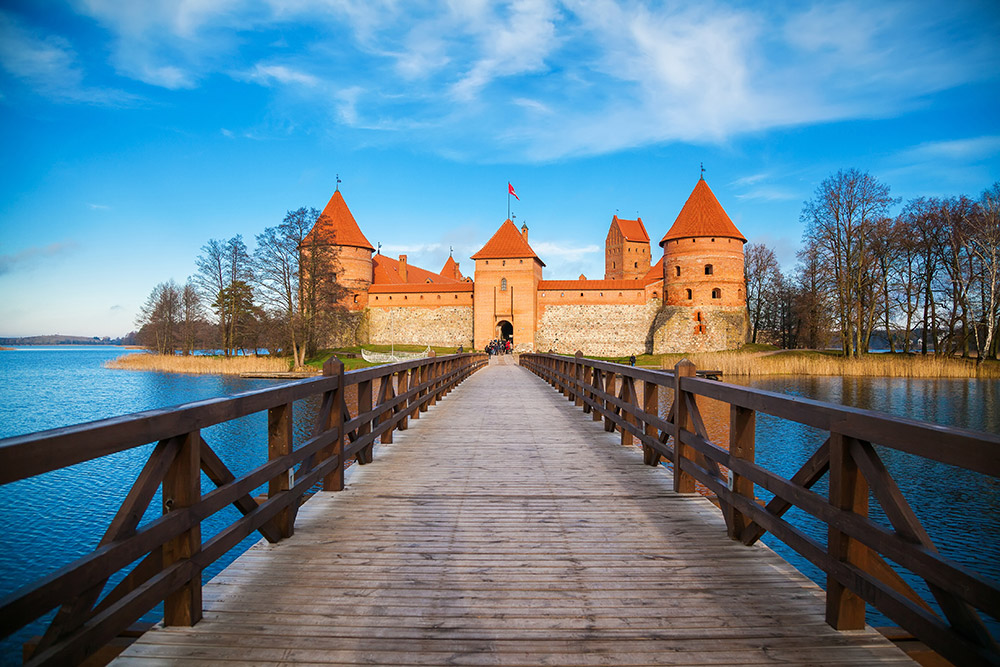
Trakai is also known as a centre of the Karaites, a small ethnic group confessing Judaism, brought by Vytautas, the Grand Duke of Lithuania from Crimea more than 600 years ago. The Karaite community has preserved their beliefs, following only the Pentateuch, their customs, traditions, and, especially, their language, throughout their history in Lithuania. Conclude your visit to Trakai by a lunch in Karaite restaurant to try traditional Kybyn pastry with a variety of fillings.
Drive some more 90 km to Kaunas, the second large city of the country. Kaunas was a temporary capital of Lithuanian Republic in the years 1919-1939, when Vilnius was occupied by Poland. Start discovering the city from the observation deck, which offers a magnificent panoramic view of the Old Town located at the confluence of two rivers, the Nemunas and the Neris. One of the neighbouring hills is called Napoleon Hill. It was from here that the French Emperor gave the order to invade Russia during his military campaign in 1812.
Let’s go down and walk around in the Old Town, see the remnants of Kaunas Castle, see the Catholic Cathedral, stroll along the narrow streets and cobbled squares full of cosy cafes and art galleries. Continue walking along the main pedestrian street, Laisves aleja (Freedom boulevard), with its 2-3 storey buildings, numerous restaurants and shops, that look the same as they looked before the Second World War.
Day 5. Kaunas
In 2022 Kaunas was awarded to be a European Capital of Culture. today You will experience some of the sights of the city’s cultural life. We will start with the Art Gallery of Mikalojus Konstantinas Čiurlionis, the outstanding artist and composer, the most known Lithuanian in the world (after the basketball players). In the museum you will have an opportunity to listen to his musical compositions, among them admirable symphonic poems “In the Forest” and “The Sea”, reflecting in music the beauty of Lithuanian land and its nature. After that, we will move on to the masterpieces of painting by the artist, who worked in the style of symbolism and art nouveau and left over 300 canvases, mainly in tempera and pastel. Many of his works go back the recent pagan past of the Lithuanian people and help understand better their character.
Just across the street you may visit Devil’s Museum, the only museum of devils in the world. It is famous for its huge collection (about 3,000 exhibits), which was started by Lithuanian artist Antanas Žmuidzinavičius back to 1906. The pieces were collected from all over the world and are characterized by the depiction of a folkloric devil. People are shown wrestling with the devil, riding on his neck, etc. There is no lack of funny scenes full of sarcasm. Devil figurines are made of wood, stone and ceramics, and the images are painted on silk and canvas.
After the lunch break on the lively central boulevard, you will visit Pažaislis Monastery – a magnificent Baroque ensemble, on the north-western shore of the Kaunas lagoon, an architectural reserve of the 17th century. The most important highlight of the ensemble is the Catholic church in the form of a Latin cross having a hexagonal dome 53 m high was built by Italian architects and beautifully decorated by pink and black marble brought from Poland.
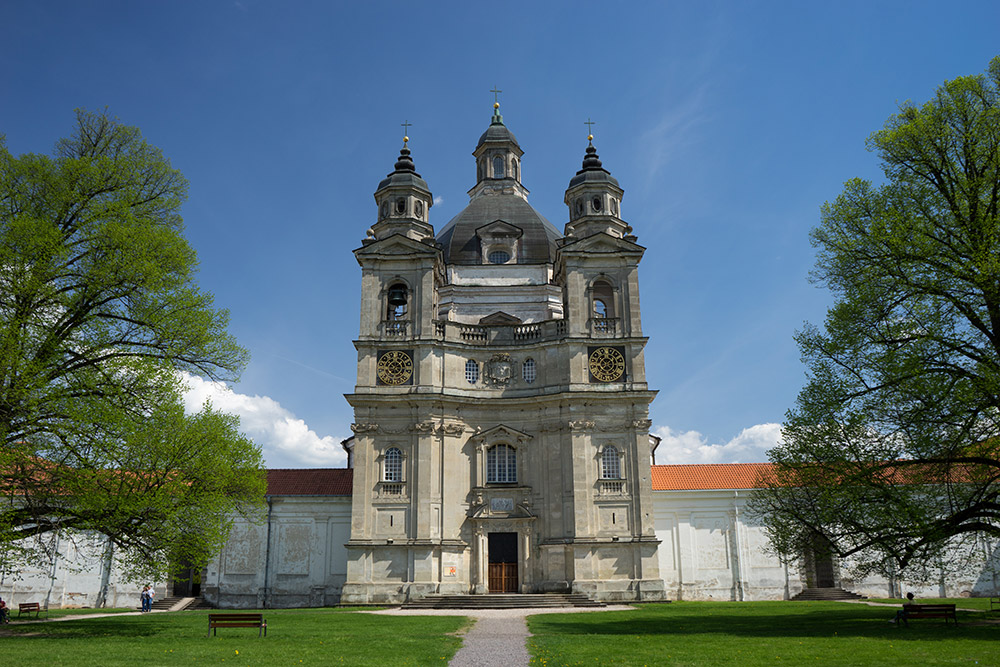
Next is the visit to Sugihara House, former Japanese Consulate in Kaunas in 1939-1940. You will learn about the life and diplomatic activities of Chiune Sugihara, a vice-consul of Japanese Empire in Lithuanian Republic. Sugihara together with his wife Yukiko and the staff of the consulate issued about 6000 visas for Jewish refugees from Poland, Lithuania, and some other countries, so saving the lives of the escapees.
You will end the day by exploring Kaunas Interwar architecture which was awarded the European Heritage label. Numerous constructions of the city are united by common architectural stylistic features that reflected the modernist style popular in Western countries at that time. Kaunas is of the few cities in the world where so many buildings of this style survived to the present day. You will have the opportunity to see not only the buildings from the outside, but also the authentic interior of the apartments, furniture, lighting, kitchen, dishes and decoration from the mid-1930s in Art Deco Museum.
Day 6. Kaunas – Rumsiskes – Vilnius
After the breakfast you start driving back to Vilnius for you flight back home. En route stop to visit Lithuanian Ethnographic Museum in Rumšiškės, opened in 1974 on another coast of the Kaunas lagoon. It is one of the largest open-air museums in Europe in terms of area (195 ha). It displays the heritage of Lithuanian rural life in a vast collection of authentic resurrected buildings where the Lithuanian people lived and worked. The museum contains 4 areas one for each ethnographic region of Lithuania and a township.
The museum shows the way of life of Lithuanian villages and towns in the 18th-20th centuries. There are exhibits of the architecture, culture, and household of all Lithuanian ethnographic regions. Along 6 km you will see barns, granaries, paving, gardens, woodsheds, mills, fences, wells, folk architecture and ancient agricultural implements. Traditional Lithuanian folk festivals are organized in the museum. You can also taste here traditional Lithuanian cuisine such as tzepelins, potato pancakes, mushroom soup, kugel, kvass and others.
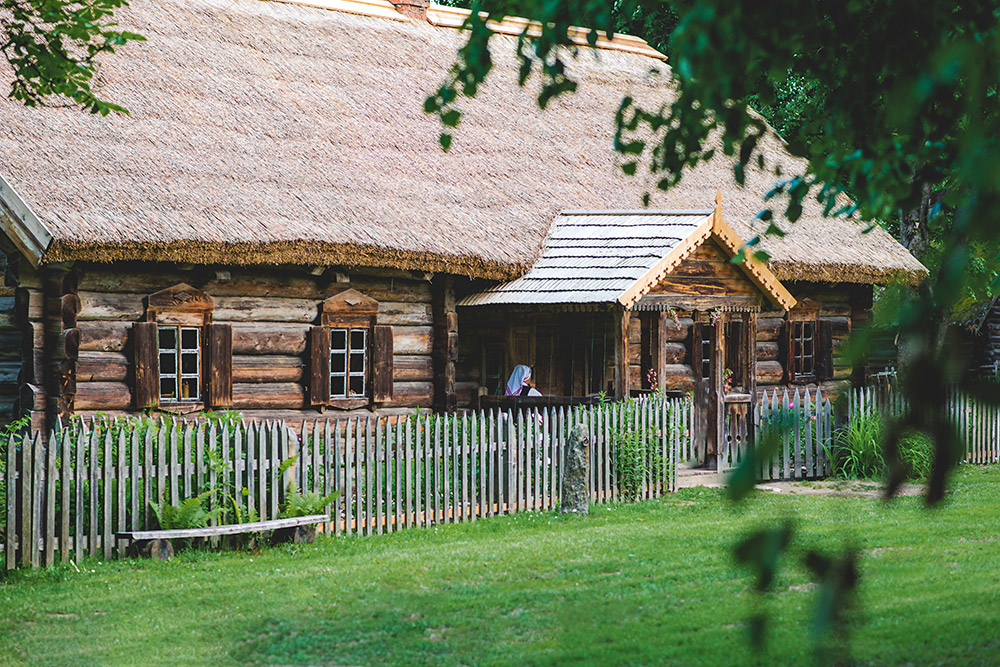
After your arrangements in the hotel in Vilnius we can offer you visit Akropolis, the largest shopping mall and entertainment centre in the Baltics. Here you will find numerous shops of all kinds, different restaurants, a huge supermarket, cinema, skating rink, casino, bowling, etc.
Day 7. Vilnius – departure
If your departure time permits few more sites in Vilnius. Enjoy visit mid-17th century-built church of St. Peter and St. Paul extremely ornated baroque architecture masterpiece. The interior is dominated by white colour, decorated by over 2000 mouldings, sculptures, bas-reliefs depicting saints, biblical scenes, symbols of earth, heaven and death, every day and liturgical objects.
For keen walker and nature lovers we can offer to experience Pūčkioriai outcrop, the most impressive and highest outcrop in Lithuania located in Pavilniai Regional Park near Vilnius. The height of the outcrop is 65 meters, the width is 260 meters. From the outcrop, admire the wonderful panorama of Vilnius, the bends of the Vilnia River, the hills and forests of the Regional Park, Pūčkioriai Manor, the former cannon foundry.
A little further on one can find the remains of the old dam at Belmont Mill. The beautifully landscaped surroundings of the mill and the flowing Vilnelė River are a very attractive place for walks. The entire restaurant and leisure complex located in the French (Belmont) mill is popular among ordinary Vilnius citizens and guests of the city.
